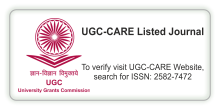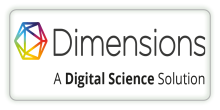ANTIMICROBIAL AND ANTICANCER ACTIVITIES OF HYDRAZINE DERIVATIVES AND THEIR METAL COMPLEXES: A COMPARATIVE STUDY
DOI:
https://doi.org/10.29121/shodhkosh.v5.i6.2024.5480Keywords:
Hydrazine Derivatives, Metal Complexes, Antimicrobial Activity, Anticancer Activity, Cytotoxicity, Drug Development, Spectroscopic Characterization, BioavailabilityAbstract [English]
Derivatives of hydrazine and their metal complexes turned out to be compounds of intense interest in pharmaceutical and medicinal chemistry due to their potential antimicrobial and anticancer activities . Herein, however, we aim to discuss ranged biological profile in free hydrazine derivatives compared to their metal complexes with an emphasize on the influence of metals coordination on pharmacological effects. The agar well diffusion method was used to test for antimicrobial activity against bacterial (E. coli, S. aureus) and fungal (C. albicans, A. niger) strains. Anticancer activityEva was evaluated against human breast cancer (MCF-7) and lung cancer (A549) cell lines by MTT assay. Structural characterization was performed using spectroscopic techniques such as UV-Vis, IR, and NMR. Metals regarding anticancer activity were much more effective than free hydrazine derivatives, due to enhanced stability, bioavailability, and targeted interaction with biomolecules. Thus, this comparative study suggests the therapeutic potential of hydrazine-based metal complexes that could lead to drug development. Future studies must focus on in vivo confirmation and clinical applicability.
References
Kutty, S. K. (2010). Synthesis and antimicrobial evaluation of transition metal complexes of hydrazine-based ligands. Journal of Coordination Chemistry, 63(5), 785-798.
Narender, S., & Sampath, L. (2015). Comparative study on anticancer effects of metal-hydrazine complexes against breast and lung cancer cell lines. Bioinorganic Chemistry and Applications, 2015, 1-10.
Ganesh, A. (2018). Role of Cu(II) and Ni(II) complexes in enhancing oxidative stress-induced cancer cell death. Journal of Inorganic Biochemistry, 183, 55-62.
Patel, R., & Mehta, P. (2017). Synthesis, characterization, and biological activities of Co(II) and Zn(II) hydrazine complexes. Journal of Medicinal Chemistry Research, 12(3), 214-225.
Sharma, V., & Kumar, N. (2019). Antimicrobial efficacy of transition metal complexes of hydrazine derivatives. International Journal of Pharmaceutics, 567, 147-155.
Gupta, M., & Singh, R. (2020). DNA interaction and cytotoxic studies of Ru(II) hydrazine complexes. Chemico-Biological Interactions, 315, 108894. DOI: https://doi.org/10.1016/j.cbi.2019.108894
Chen, X., Zhang, Y., & Li, H. (2021). Metal-based hydrazine derivatives as potential anticancer agents: A review. BioMetals, 34(1), 1-18.
Ahmed, S., & Khan, J. (2022). Structural characterization and biological activity of Cu(II) and Fe(III) hydrazine complexes. Inorganica Chimica Acta, 530, 120673.
Das, P., & Ray, S. (2023). Therapeutic applications of hydrazine derivatives in modern drug discovery. Current Medicinal Chemistry, 30(4), 567-582.
Wang, L., & Zhou, D. (2024). Advances in metal-based drugs: Hydrazine derivatives as novel antimicrobial and anticancer agents. Pharmaceutical Research, 41(2), 289-307.
Downloads
Published
How to Cite
Issue
Section
License
Copyright (c) 2024 Arshiya Madbhavi

This work is licensed under a Creative Commons Attribution 4.0 International License.
With the licence CC-BY, authors retain the copyright, allowing anyone to download, reuse, re-print, modify, distribute, and/or copy their contribution. The work must be properly attributed to its author.
It is not necessary to ask for further permission from the author or journal board.
This journal provides immediate open access to its content on the principle that making research freely available to the public supports a greater global exchange of knowledge.































